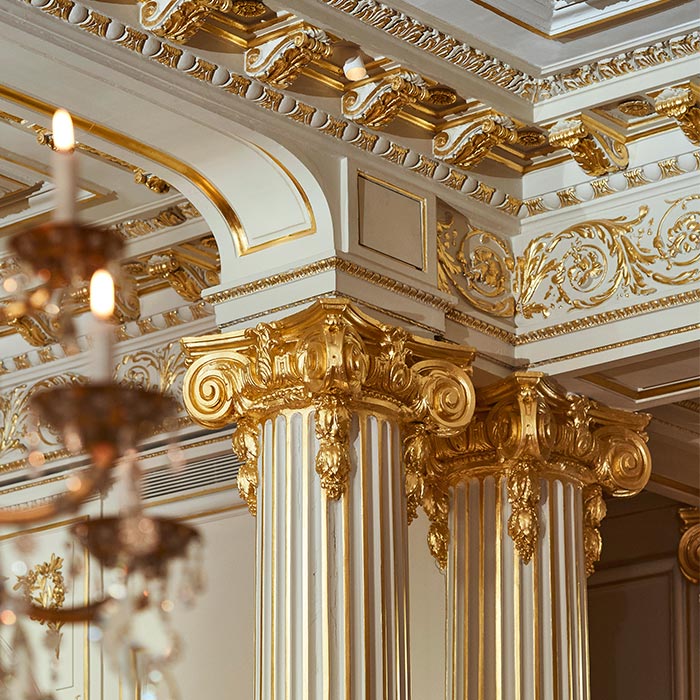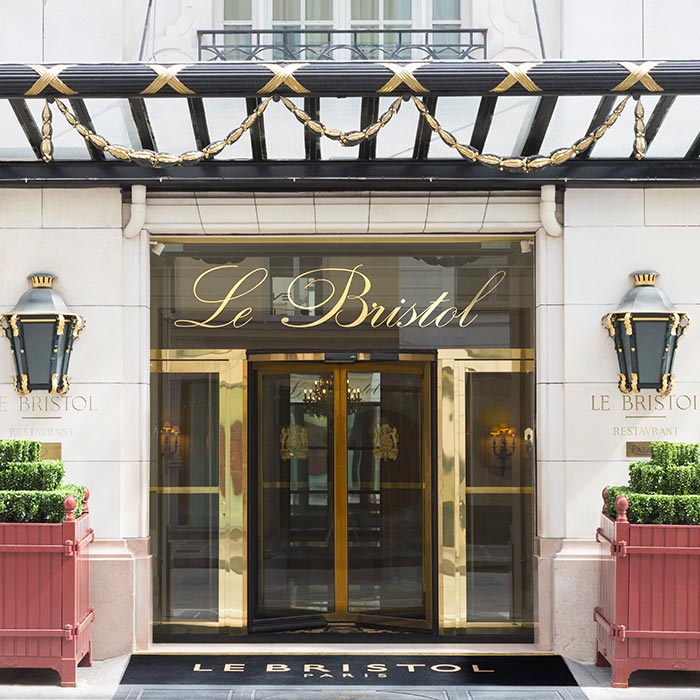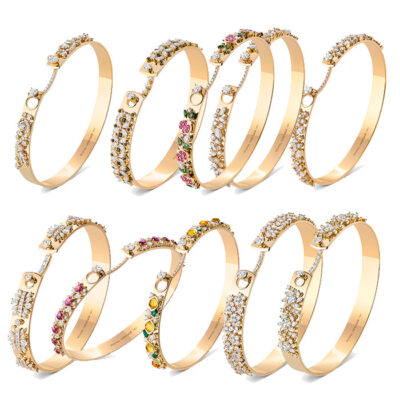Style
09 December 2022
Share
TFJP x Comité Colbert, the great hotels and the gold standard
TFJP and the Colbert Committee explore the world of gold in the context of sumptuous palaces. When the great hotels opened at the end of the 19th century, these luxurious mansions sparkled in all their Louis XVI, Empire and Napoleon III finery. But in the wake of numerous transformations and renovations, where are they today?
By Sandrine Merle.
For all the gold at the Ritz…
Let’s start with a hotel that has become the byword for luxury, with its commitment to upholding the spirit laid down by its founder in 1919, and its blend of styles ranging from the seventeenth century to the Empire. “There is even more gold than there was originally,” explains technical director Philippe Vareille. “This is now the case for all the faucets, whereas before only the Prestige suites enjoyed this distinction.” The Imperial suite is an echo of Versailles, with the extraordinary Louis XIV footboard covered in gold leaf. What would these luxury hotels be without these little 80×80 squares barely 1/10th of a micron thick! By the time it reopened in 2016, the Ritz had used 350,000 of them, or 6 kilograms. “Customers would be disappointed not to find gold because it’s inseparable from Napoleon III architecture,” continues Philippe Vareille. César Ritz would feel totally at home!
The Hôtel du Palais: covered in gold
The owners of the Hôtel du Palais (the city of Biarritz, JC Decaux and the Caisse des Dépôts), an imperial residence built in 1855 by Napoleon III and Eugenie, share a similar outlook. Fresh from its latest renovation, the place has lost none of its panache with a profusion of gold featuring the initials NE, palmettes, eagles, letters on the menus, fabrics, and even in shavings on the desserts. For lovers of glitz, La Rotonde is still the most glittering restaurant. “Gold is irreplaceable in creating a warm and soothing atmosphere, a dusky or dawn light. It creates the impression of candlelight,” explains Lyonel Barraquet, painter and decorator at the Hotel du Palais.
TFJP x Comité Colbert, gold in tableware
All that glitters is not gold…
Not all gilding is done with thin sheets of precious metal. It can be simple brass like on locks, door handles or screws but also on furniture trimmings or stair railings. Much less expensive (because of its intrinsic value and the number of hours it takes to install), this alloy of bronze and zinc is also easy to machine and maintain: a simple polish is enough to bring out its shine. “It’s hard to see the difference with the naked eye, but you can feel it: it’s like coffee and a coffee substitute,” says Lyonel Barraquet. Brass can also be coated with a tiny layer of gold by electrolysis, like the famous swan-shaped taps at the Ritz.
TFJP x Comité Colbert, the savoir-faire and métiers of gold in jewelry
Use sparingly
Today in the great palaces, the use of yellow gold tends to be on the decline… At the Bristol, the stance is a radical one: all that remains here and there is a plaque, a frame, a frieze on the carpet, a corner of a piece of furniture. Despite their reputation based on a glorious past (and a Middle Eastern owner), the Meurice and the Plaza Athénée have practically done away with every last trace. With one exception: Jean Imbert’s restaurant, whose sublime panels and ceiling were gilded with fine gold by the house of Meriguet. “At one time, gold was probably overused for lack of other materials, but now there are very beautiful, more functional and less expensive ones,” explains Le Meurice. Everywhere, priority is given to an 18th century classicism hybridized with wood, white Corian, very soft cameos based on whites, grays, blues, etc. Even the Ritz, for the Coco Chanel suite, has opted for a more discreet, whiter gold known as moon gold. Meanwhile the great mountains hotels use no gold at all.
And if in future only one element remained in these great hotels? It would probably be the emblematic golden keys that the most seasoned concierges wear on the lapels of their uniforms.

















